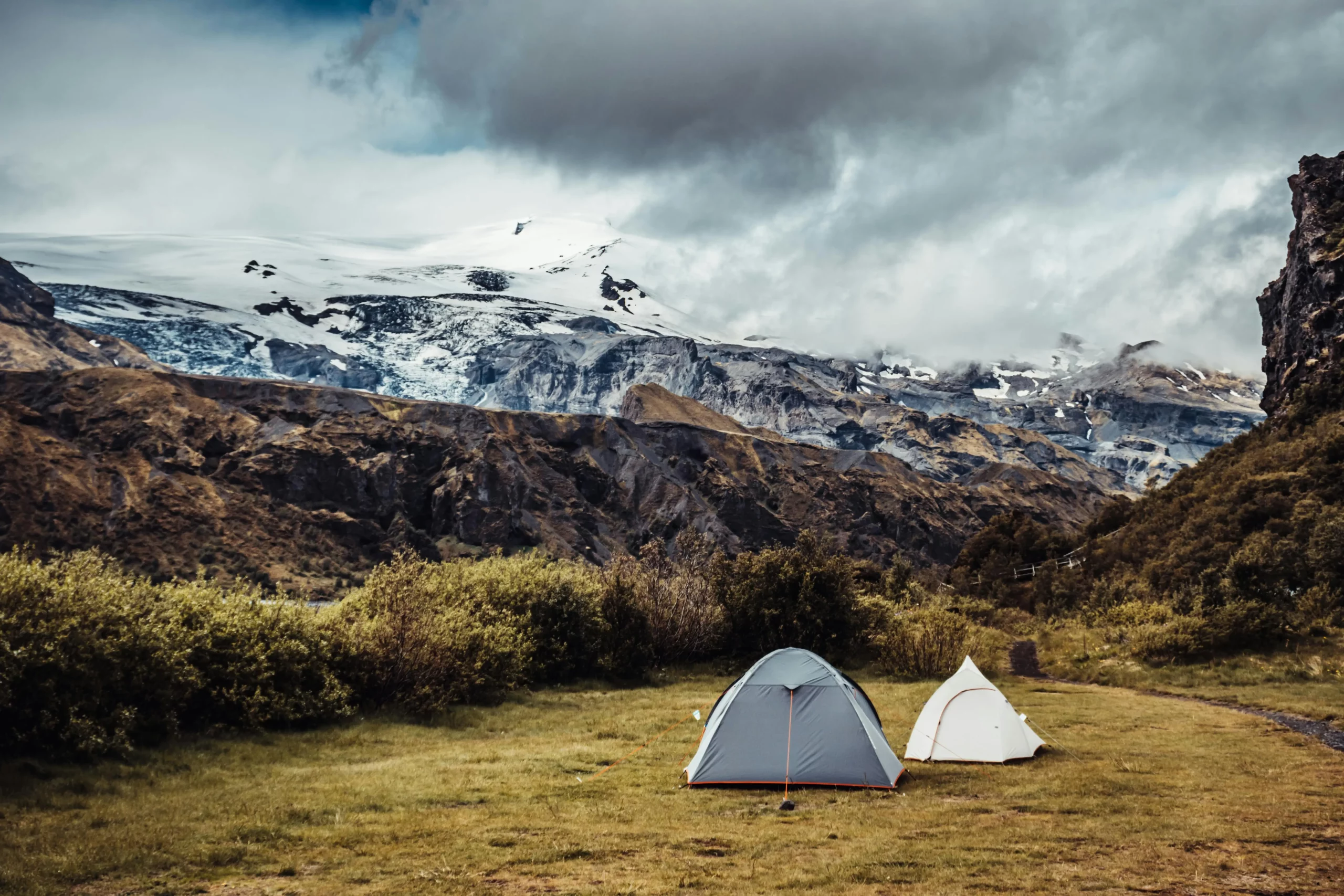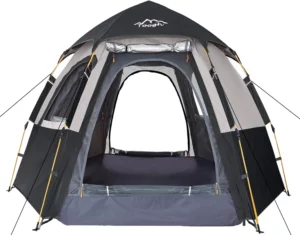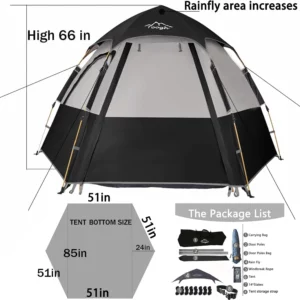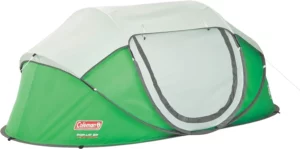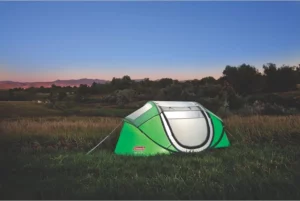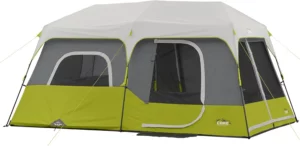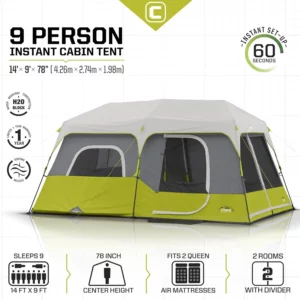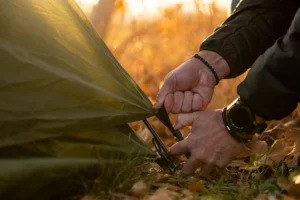Introduction: Why Choose a Pop-Up Tent?
Looking for a quick, ready-to-go shelter? Meet the pop-up tent. Designed for fast setup and easy transport, the best pop up tents take the hassle out of camping. Unlike traditional tents, which can feel like a wrestling match with poles and rainflies, pop-up tents are engineered for ultimate simplicity. With flexible frames or spring-loaded poles, most pop-up tents unfold in seconds—perfect for festival-goers, first-time campers, or anyone seeking stress-free shelter.
Today’s pop-up tents come with a range of features, from water resistance and UV protection to specialized ventilation. Whether you’re setting up for a solo adventure, a family trip, or a quick weekend escape, the best pop-up tent can meet your needs. That said, these tents may not have the same durability as some traditional models. But with the right pick, you’ll find a pop-up tent that offers both convenience and comfort in one easy package.
1. Key Factors to Consider When Choosing the Best Pop-Up Tent
Choosing the right pop-up tent isn’t just about speed. Here’s what else to look for when you want to level up your camping game:
- Ease of Setup and Takedown
Pop-up tents are known for quick setup, but some are faster than others. Many of the best pop-up tents, like the Toogh 3-4 Person Tent, feature spring-loaded frames that lock into place with minimal effort - Weather Resistance
Camping often means braving the elements, so check for waterproof and UV-resistant features. Many models, like the Core 9-Person Instant Cabin, include durable fabrics with a water-resistant hydrostatic head of at least 2,000mm, plus a built-in rainfly for light showers - Ventilation and Airflow
Fresh air flow can make all the difference, especially in warm weather. The best pop-up tents offer multiple mesh windows and ceiling vents. For example, the Moon Lence 4-Person Instant Tent is equipped with five closeable windows, allowing campers to customize ventilation for optimal comfort - Space and Capacity
Tent size matters—especially when you’re camping with friends or family. Options like the Core 9-Person Instant Cabin provide generous space, standing room, and even a room divider for added privacy. Other compact tents, like the Coleman 2-Person Pop-Up Tent, maximize efficiency for solo or couple camping
2. The Best Pop-Up Tents: Top Picks by Category
For every kind of camper, there’s a pop-up tent that fits perfectly. Here’s a lineup of the best pop-up tents by category:
Best Overall Pop-Up Tent
Toogh 3-4 Person Tent: This standout offers a fast setup, reliable weather resistance, and a budget-friendly price. Its hexagonal design and large doors make it comfortable and accessible, ideal for both casual campers and small families.
Best Value Pop-Up Tent
Coleman 2-Person Pop-Up Tent: Known for affordability without compromising quality, this tent boasts solid waterproofing, UV resistance, and a quick-fold design for easy transport. Lightweight and perfect for solo campers, it’s a great choice for budget-friendly adventures.
Best for Large Families
Core 9-Person Instant Cabin: For family trips, this roomy tent is a top pick. Standing height, a room divider, and multiple vents create a homey feel at the campsite. Easy setup means more time for fun, and its sturdy frame holds up well in most weather.
Best Lightweight and Compact Option
Teton Sports Vista Quick Tent: When you need a lightweight, backpacking-friendly option, this compact tent delivers. The locking hub system and gear loft make it both functional and comfortable, a win for solo travelers looking to pack light.
3. Pros and Cons of Pop-Up Tents
Every pop-up tent comes with strengths and limitations. Here’s what to keep in mind before making a choice:
- Pros
- Quick, solo-friendly setup—most tents are ready in under two minutes.
- Lightweight and easy to carry, making them ideal for festivals, hiking, and short trips.
- Integrated poles or frames make setup a breeze, especially for beginners.
- Cons
- Some pop-up tents have limited weatherproofing, with fewer protection features than traditional models.
- Interior space can feel cramped, with fewer options for add-ons or extra vestibules.
- Durability may be lower than regular tents, especially in rough or windy conditions.
4. Comparison Chart: Pop-Up Tent Features
This comparison chart highlights some key features of top-rated pop-up tents to help guide your decision:
| Tent Model | Capacity | Waterproof Rating | Setup Time | Weight | Unique Features |
|---|---|---|---|---|---|
| Toogh 3-4 Person Tent | 4 people | 2,000mm | <1 minute | 10 lbs | Hexagonal shape, multiple doors |
| Coleman 2-Person Pop-Up Tent | 2 people | Waterproof base | 10 seconds | 4 lbs | UV-resistant, compact |
| Core 9-Person Instant Cabin Tent | 9 people | H2O block technology | 2 minutes | 30 lbs | Room divider, standing height |
| Teton Sports Vista Quick Tent | 1 person | – | – | 4 lbs | Gear loft, locking hub system |
5. FAQs about the Best Pop-Up Tents
- What makes a tent a “pop-up” tent?
Pop-up tents use an integrated frame or pole system that allows them to set up instantly. Unlike traditional tents, which require assembly, pop-up tents unfold with minimal effort - Are pop-up tents waterproof?
Many pop-up tents offer basic waterproofing, often rated at around 2,000mm. Additional rainflies or sealed seams, as seen in the Core 9-Person Instant Cabin, can improve water resistance for heavier rains - Can I use a pop-up tent for backpacking?
For lightweight travel, some pop-up tents, like the Teton Sports Vista Quick Tent, offer a compact design with enhanced durability, making them suitable for backpacking - How long do pop-up tents last?
Pop-up tent longevity depends on materials and maintenance. For best results, always follow tent care tips to dry and store the tent properly between trips.
6. Final Tips for Buying a Pop-Up Tent
To get the most from your pop-up tent, choose a model that aligns with your camping needs and climate. For warm-weather camping, tents with multiple windows and adjustable ventilation will help keep things cool. Meanwhile, if you’re expecting rain, look for waterproof ratings of at least 2,000mm or additional rainfly options. Practicing responsible camping practices will also help prolong your tent’s life by reducing wear and tear.

